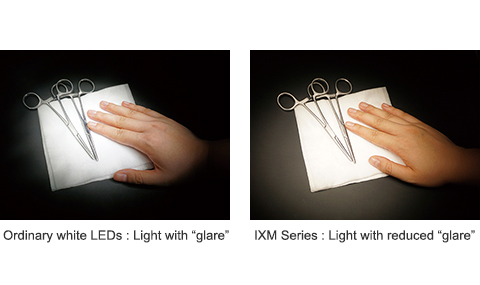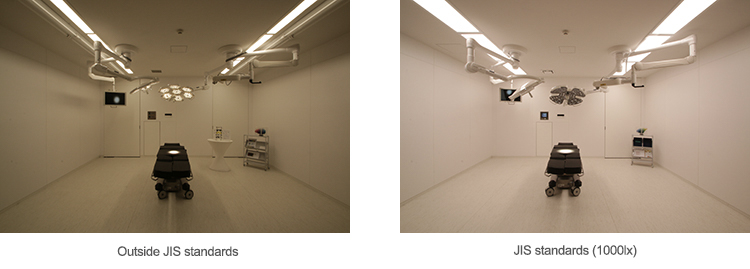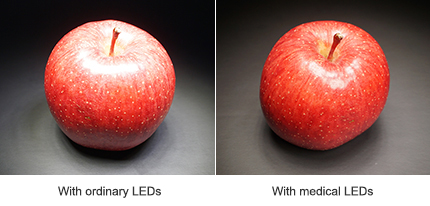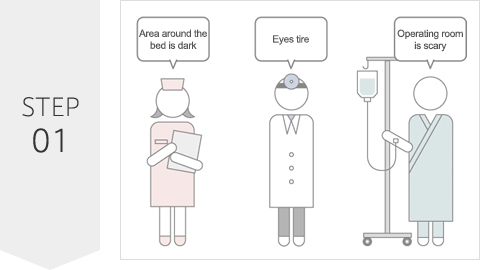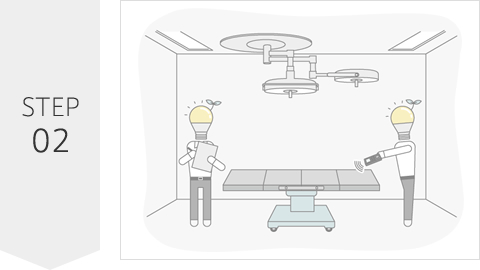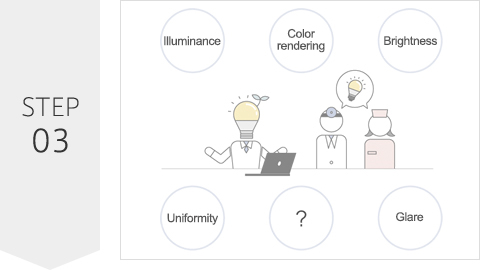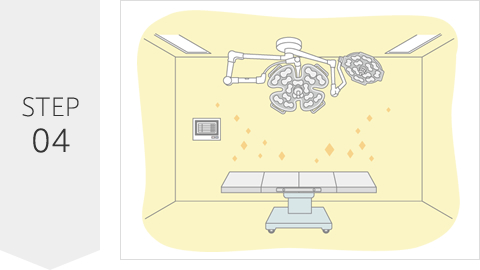Recommendations
Please select an article.
Optimal Medical Lights “Medical LEDs”
We create Yamada Shadowless Lamp’s unique “optimal medical light” by addressing LED’s specific demerits.
Merits and Demerits of LEDs

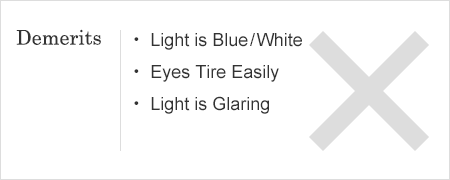
What are Medical LEDs?
Ultra-high color rendering LEDs achieve reliable visibility and distinguishability
The R9 “Red” color in the special color rendering index (Ri) including those closest to the human body, and the R15 value for Japanese skin tone are both high values, achieving a light with ultra-high color rendering.This makes the colors of blood, organs, and tissue in the operative field more visible and distinguishable, helping improve the precision of operations.
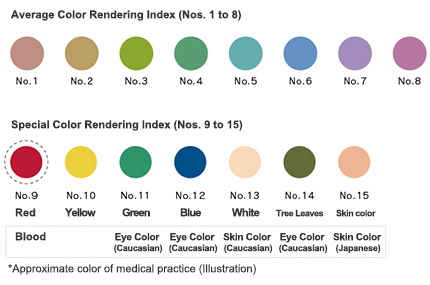
Light that is gentle on the eyes with reduced blue-light risk
Blue light can cause eye strain in doctors spending long hours under unusual lighting in the operating room.Medical LEDs reduce blue light risk, with a spectrum that reduces eye strain.
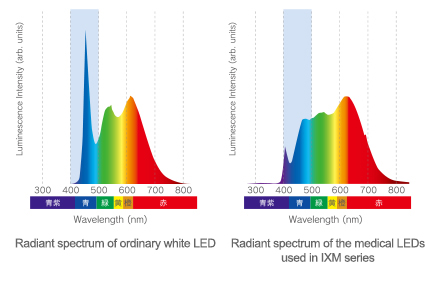
Low glare light that makes the operating site visible and
improves operation efficiency
The unique optical design prevents glare when illuminated on the operation site.This significantly reduces eye strain and discomfort for doctors, who must continue to look at the operation site over a long period of time.
